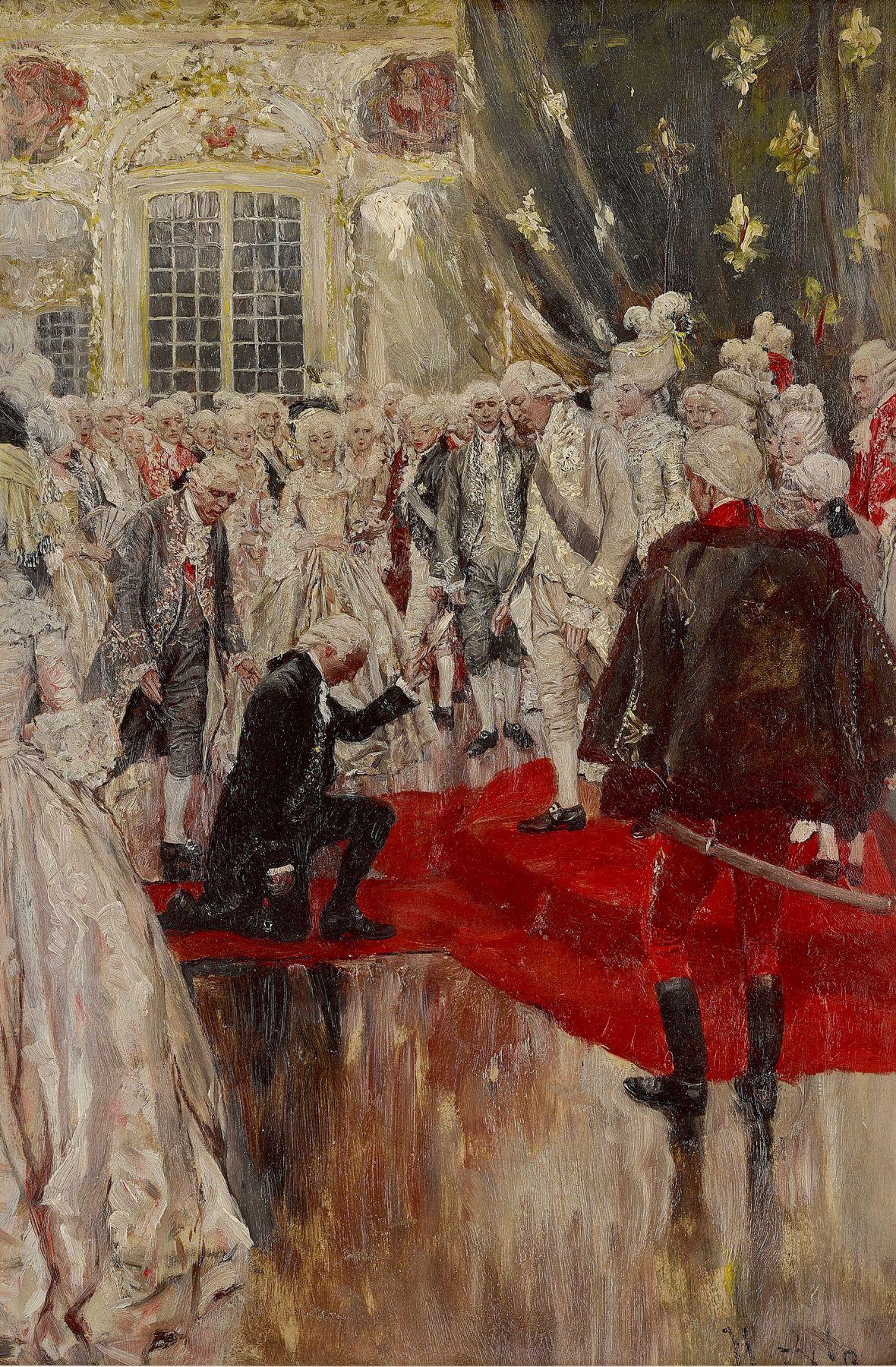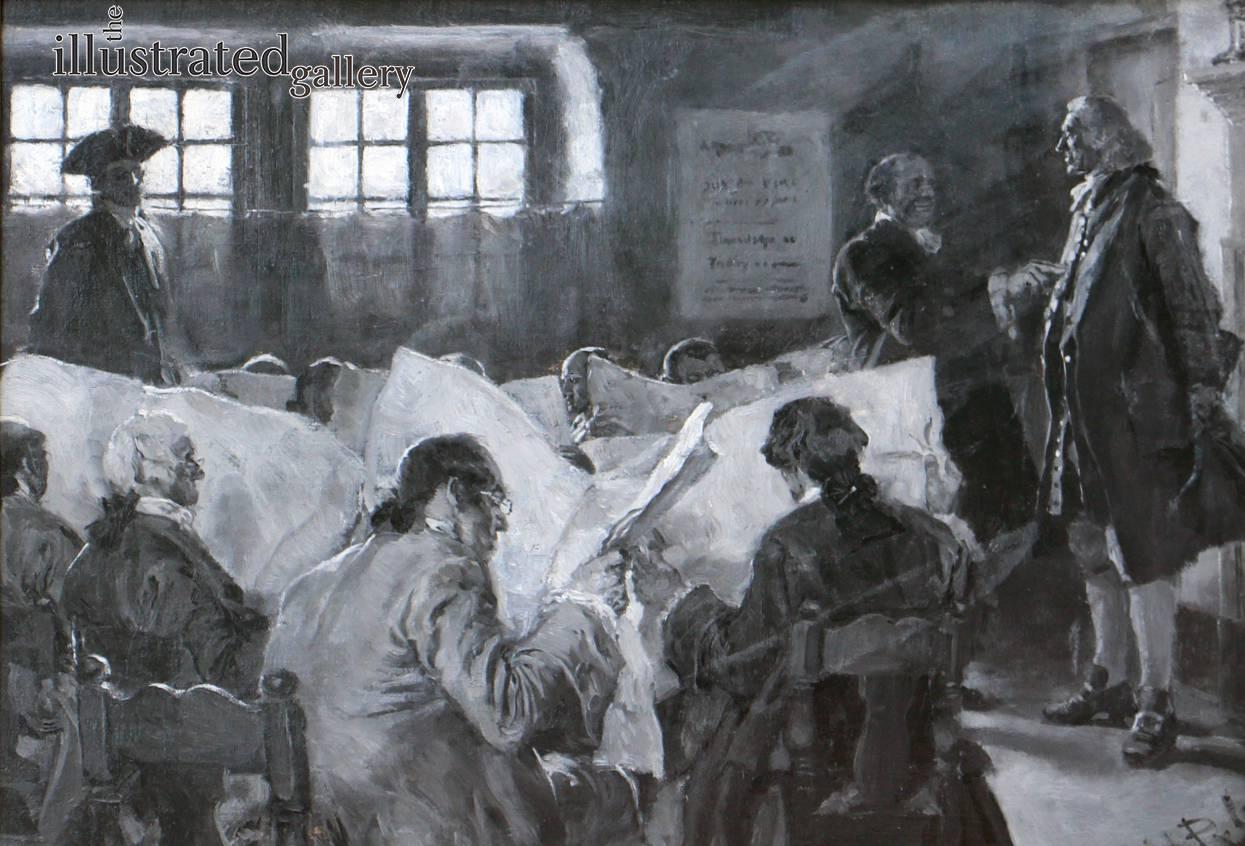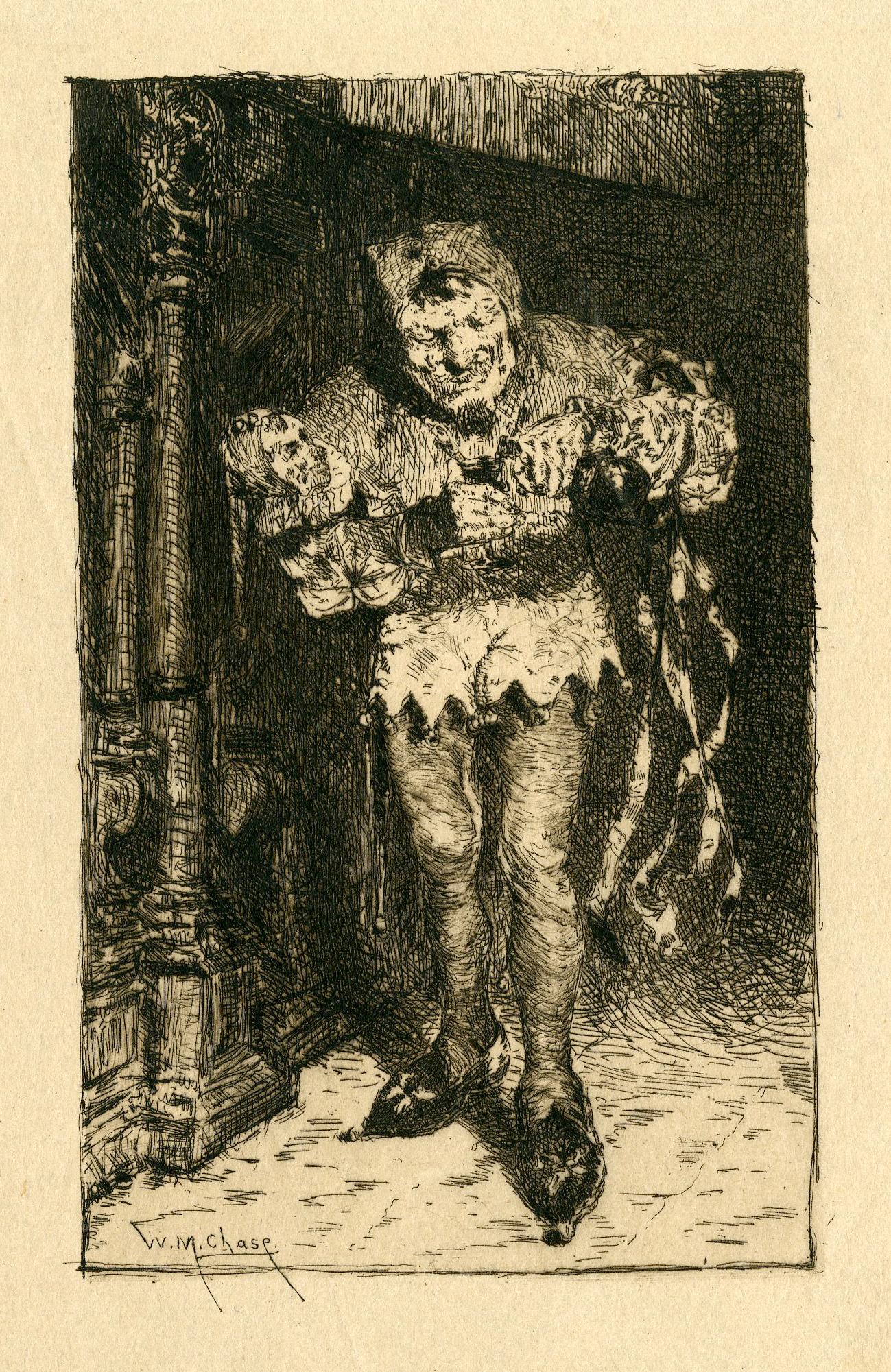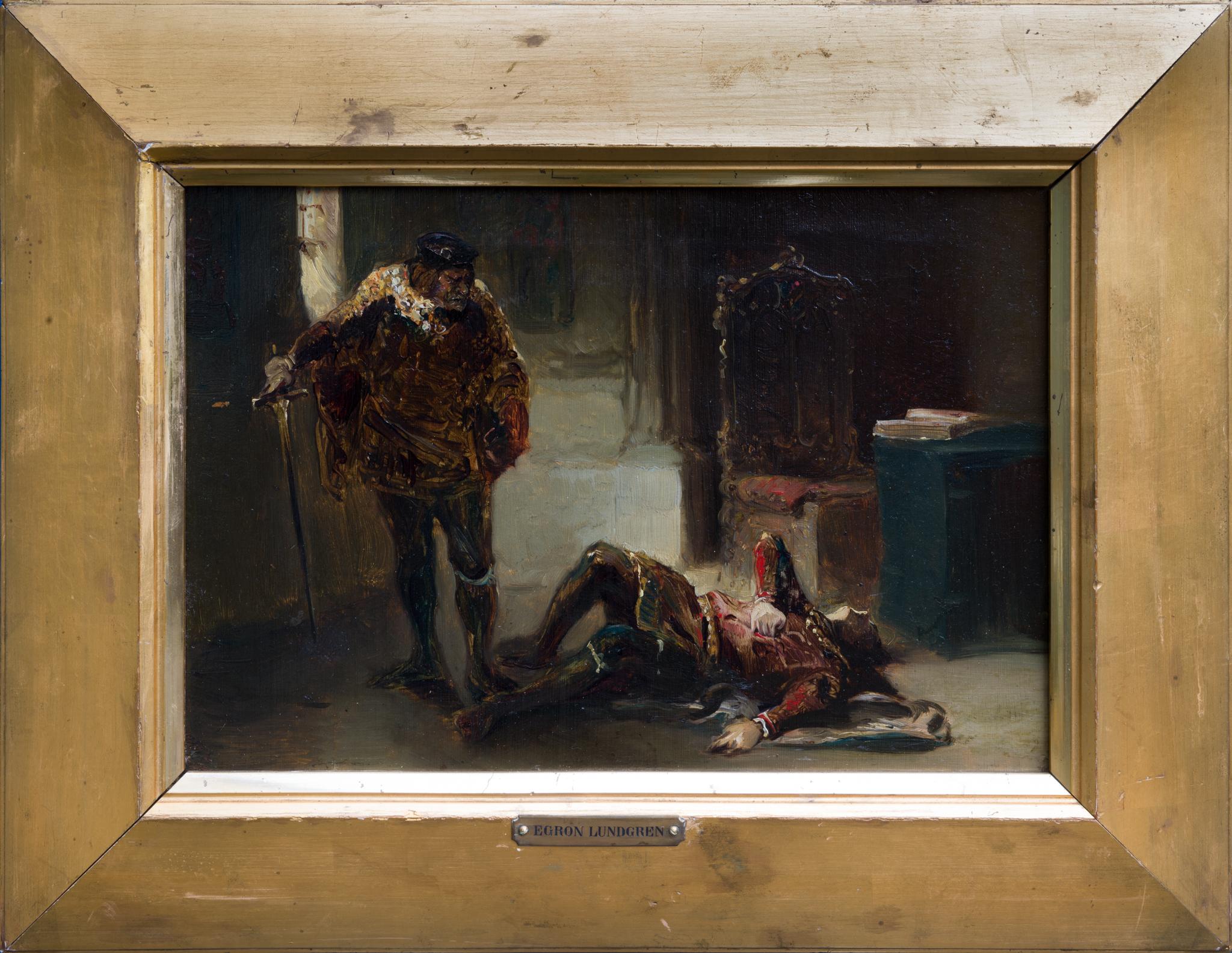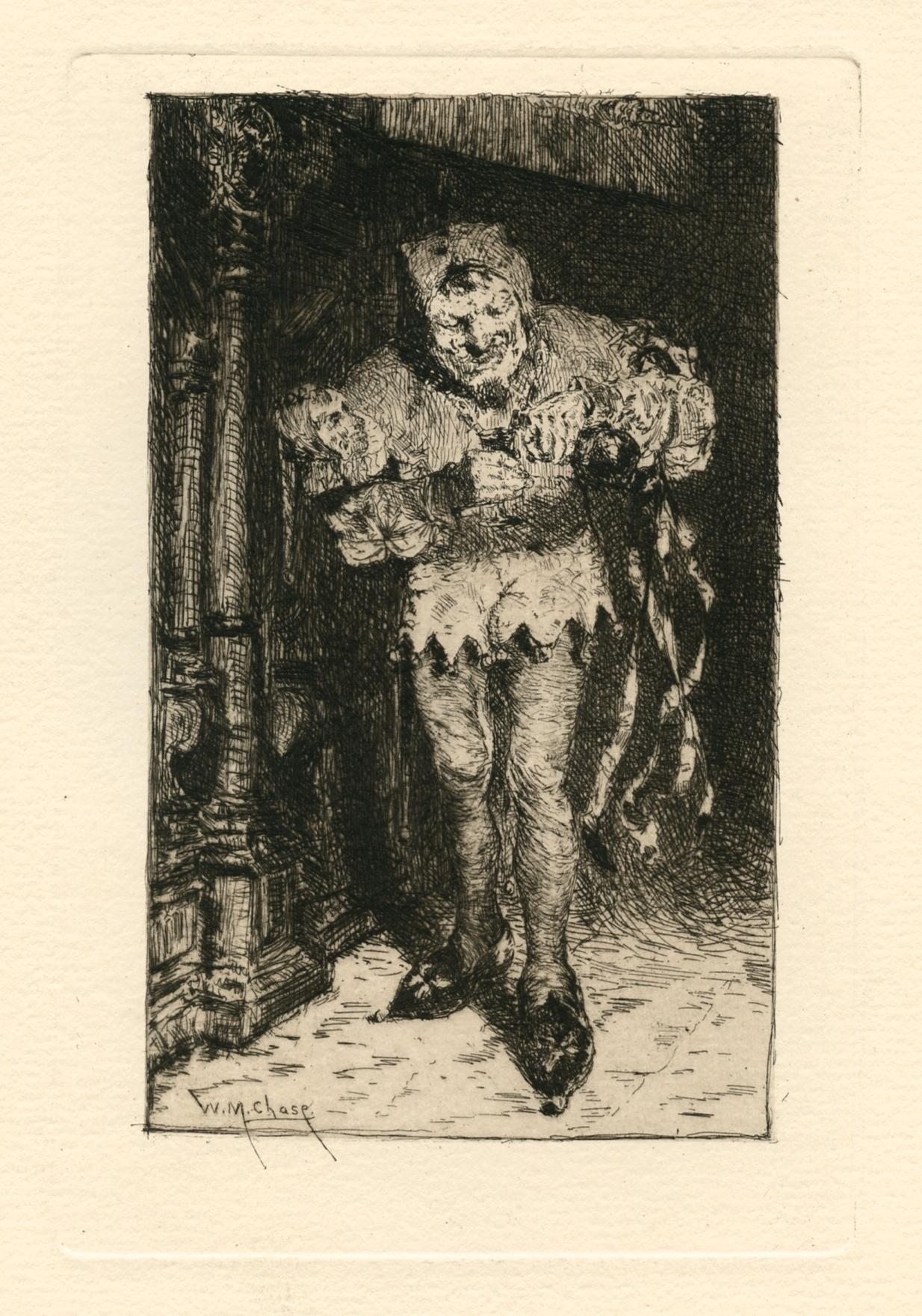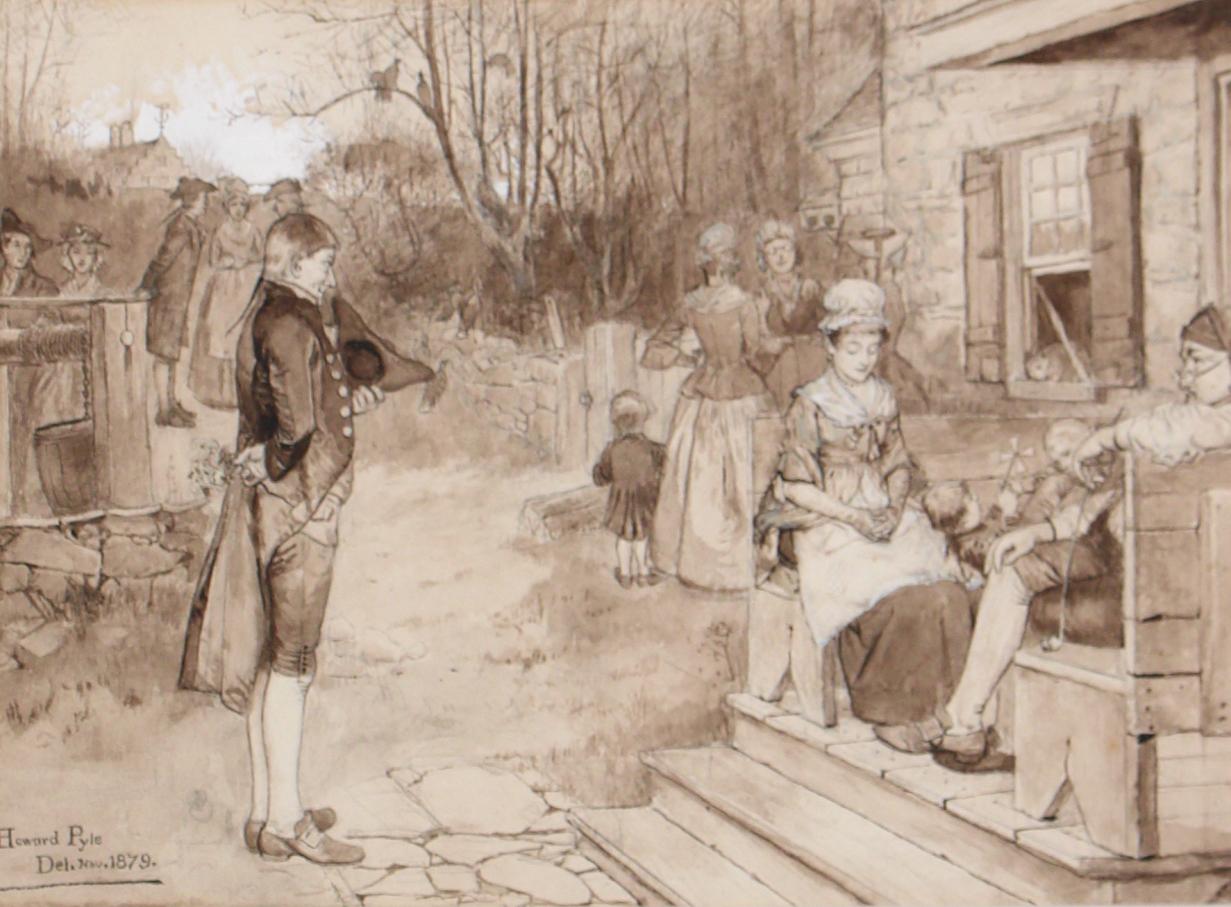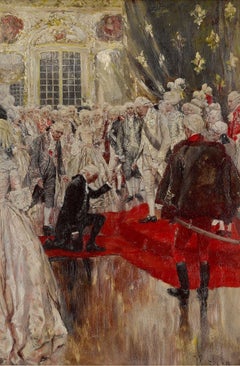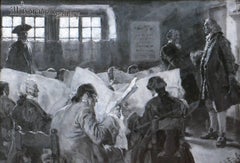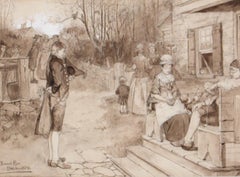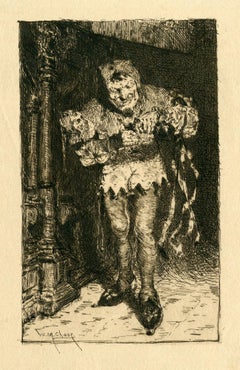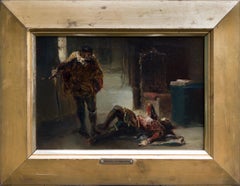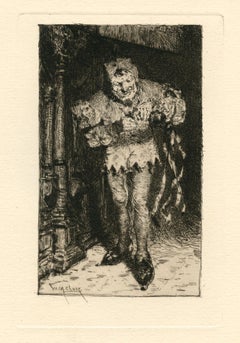Items Similar to Surprised by the Hero
Want more images or videos?
Request additional images or videos from the seller
1 of 6
Howard PyleSurprised by the Hero1886
1886
$39,000
£29,820.08
€34,159.13
CA$55,005.80
A$59,867.39
CHF 31,991
MX$722,969.68
NOK 402,048.50
SEK 373,951.89
DKK 255,184.72
About the Item
Date: 1886
Medium: Oil on Board
Dimensions: 14.00" x 17.00"
Signature: Signed at Bottom Right Corner
Wide Awake Magazine, Oct., 1886.
- Creator:Howard Pyle (1853 - 1911, American)
- Creation Year:1886
- Dimensions:Height: 14 in (35.56 cm)Width: 17 in (43.18 cm)
- Medium:
- Period:
- Condition:
- Gallery Location:Fort Washington, PA
- Reference Number:Seller: 32071stDibs: LU38431635363
About the Seller
5.0
Recognized Seller
These prestigious sellers are industry leaders and represent the highest echelon for item quality and design.
Established in 1995
1stDibs seller since 2016
140 sales on 1stDibs
Typical response time: 1 hour
- ShippingRetrieving quote...Shipping from: Fort Washington, PA
- Return Policy
More From This Seller
View AllKing Louis
By Howard Pyle
Located in Fort Washington, PA
Medium: Oil on Panel
Signature: Signed "H. Pyle" Lower Right and Inscribed Indistinctly On the Reverse
"At the same time he extended toward King Louis the ...
Category
1890s Figurative Paintings
Materials
Oil, Panel
$49,000
"In The Reading-Room" for the article "Old New York Taverns"
By Howard Pyle
Located in Fort Washington, PA
Illustration for the article ”Old New York Taverns” by John Austin Stevens for Harper’s New Monthly Magazine, published May 1890, Page 849.
The article explores the significant role...
Category
1890s Figurative Paintings
Materials
Oil, Board
Sunday In Old Catskill, Harper's New Monthly Magazine Story Illustration
By Howard Pyle
Located in Fort Washington, PA
Medium: Watercolor and Pencil on Board
Sight Size 11.00" x 15.00", Framed 17.50" x 20.50"
Signature: Signed Lower Left
Sunday In Old Catskill, Harper's New Monthly magazine story il...
Category
1890s Figurative Drawings and Watercolors
Materials
Watercolor, Board, Pencil
Mural Study for "The First Settlement on Manhattan Island"
By Howard Pyle
Located in Fort Washington, PA
Medium: Oil on Canvas
Signature: Unsigned
This is a study for the very large Howard Pyle mural now in the historic County Courthouse in Hudson County, New Jersey. It was commissione...
Category
1910s Figurative Paintings
Materials
Canvas, Oil
The Odes and Epodes of Horace
By Howard Pyle
Located in Fort Washington, PA
Title-page illustration published in The Odes and Epodes of Horace, (Boston: Bibliophile Society, 1901).
A beautiful and detailed image that displays Pyle's exquisite brush work.
Category
Early 1900s Drawings and Watercolor Paintings
Materials
Ink, Pen
The Odes and Epodes of Horace
By Howard Pyle
Located in Fort Washington, PA
Signed and dated "H. Pyle 1901" lower right corner
Title-page illustration published in The Odes and Epodes of Horace, (Boston: Bibliophile Society, 1901).
A beautiful and detailed...
Category
Early 1900s Drawings and Watercolor Paintings
Materials
Ink, Pen
You May Also Like
Keying Up - The Court Jester
By William Merritt Chase
Located in Fairlawn, OH
Keying Up - The Court Jester
Etching with drypoint, 1879
Signed in the plate lower left corner (see photos)
Proof before engraved title and engraved names
Printed on thin light golden Japanese tissue paper
In the final state, with engraved titled and typeface engraved artist’s signature below the image
Condition: excellent
Plate size: 6-5/8 x 4-1/4"
According to Pisano, this image was very popular during Chase’s life. It is based on his famous painting, Keying Up-The Court Jester, in the collection of the Pennsylvania Academy of Fine Arts. The painting was created in Munich during the artist’s studies there. It was exhibited in the 1876 Centennial Exhibition in Philadelphia where it won a Medal of Honor and helped establish the artist’s reputation as a leading American painter.
Chase, always conscious of self promotion, created the etching and had numerous impressions printed. He sold them for a modest price to increase his fame. The etching was later published in Sylvester R. Koehler, American Art Review, September 1878. It was for this American Art Review printing that the engraved titled and type face signature below the image were added to the plate.
This example was part of a group of impressions that came down in the Chase family via his daughter Dorothy Bremond Chase, his third daughter. They were acquired at auction in a single auction lot, housed in a paper board folder. The consignor was Associated American Artist’s as they were liquidating their stock prior to closing the gallery.
Dorothy was the subject of Chase’s painting, My Little Daughter Dorothy. C. 1894, in the collection of the Detroit Institute of Arts as well as numerous other portraits of her.
Reference: Pisano/Bake, Volume 1, Pr. 3, illustrates the rare 1st state, this being a 2nd state before any other the engraved title and Chase's name in the bottom margin which are found in the third state.
Artist bio in file (Chase)
In 1883 Chase was involved in the organization of an exhibition to help raise funds for a pedestal for the Statute of Liberty. The exhibition featured loans of three works by Manet and urban scenes by the Italian Impressionist Giuseppe de Nittis. Both artists influenced Chase's Impressionistic style that gave rise to a series of New York park scenes. It is also thought that he was influenced by John Singer Sargent's In the Luxembourg Gardens (1879) which was exhibited in New York at this time. Indeed, Chase had met Sargent in Europe in 1881, the two men becoming lifelong friends with Sargent painting Chase's portrait in 1902.
On another European trip in 1885, Chase met James McNeill Whistler in London. While Whistler had a reputation for being difficult, the two artists got along famously and agreed to paint one another's portrait. Eventually, however, Whistler's moods began to grate with Chase who wrote home stating "I really begin to feel that I never will get away from here". For his part, Whistler criticized Chase's finished portrait and, according to Hirshler, "complained about Chase for the rest of his life". While no record exists of Whistler's portrait of Chase; Chase's portrait of Whistler remains a well-known piece in his oeuvre.
In 1887 Chase married Alice Gerson, the daughter of the manager of a lithography company. Though some fifteen years his junior (Chase was 37), he had known Alice for some time through her family's devotion to the arts. The pair, who would enjoy a happy marriage with Alice in full support of her husband's career, settled initially in Brooklyn where their first child was born. The couple would parent six daughters and two sons and it was only his family that could rival his devotion to his art. Indeed, Chase often combined his two loves by painting several portraits of his wife and children in Brooklyn parks before the couple relocated to Manhattan.
Later Period
Between 1891 and 1902, Chase and his family spent their summers at a purpose-built home and studio in Shinnecock Hills, a close suburb of the upmarket town of Southampton on the south shore of Long Island (roughly 100 miles east of New York). Chase set up, and taught two days a week, at the nearby Shinnecock Hills Summer School of Art which benefitted from the financial backing of local art collectors. It was at Shinnecock that Chase, taken in by the region's striking natural surroundings, painted several Impressionistic landscapes. As Bettis put it, "There, among the dunes, in the bright sunlight and sea air his painterly impulse was given free sway, and he produced some of his freest and loveliest work". His passion for the area was so felt he even gave his daughter Hazel the middle name of Neamaug, in honor of the rich Native American history of Shinnecock. Chase was equally focused on the students that came to the School and who he encouraged to paint in the modern plein air style favored by the French Impressionists.
Although Chase was making a name for himself as an Impressionist, he never abandoned his commitment to the sombre tones and academic tropes he had learned in Munich, though these he reserved for his portraits, and for his series of striking still lifes featuring dead fish. Chase was in fact a successful society portraitist - he painted fashionable women for a fee of $2,000 - and would paint his students as "samples" which he then donated to leading art institutions (such as Lady in Black (1888) which he donated to the Metropolitan Museum in 1891).
In 1896, facing financial difficulties, Chase flirted with the idea of giving up his teaching in New York and traveled with his family to Madrid where he developed a passion for bullfighting. Chase returned however to Shinnecock in June to teach his yearly summer art class, and in the fall of that year, established his own art school in Manhattan: the Chase School which was modelled on the Académie Julian in Paris. Chase lacked business savvy, however, and the Chase School lasted only two years before it was placed under new management. It continued as the New York School of Art (changed to Parsons School of Design starting 1941) with Chase as head the School for eleven more years. Chase also taught during this period at the Pennsylvania Academy of Fine Arts.
In 1902, following the premature death of his friend John Twachtman, Chase was invited to join the Ten American Painters group (who included amongst its members, Frank Weston Benson, Thomas Wilmer Dewing...
Category
1870s American Impressionist Figurative Prints
Materials
Etching
Assassination of Clarence in the Tower; Scene from Richard III, Act I, Sc. 4
Located in Stockholm, SE
Egron Sellif Lundgren (Stockholm 1815–1875 Stockholm)
The assassination of George, Duke of Clarence in the Tower of London; A Scene from Shakespeare’s Richard III (Act I, scene 4)
...
Category
1850s Realist Figurative Paintings
Materials
Canvas, Oil
"Keying Up - The Court Jester" original etching
By William Merritt Chase
Located in Henderson, NV
Medium: original etching. This impression on laid paper was published by the American Art Review in 1880. The etched image measures 5 3/4 x 3 1/2 inches; the plate measures 6 3/4 x 4...
Category
1880s Portrait Prints
Materials
Etching
Onward Christian Soldiers - British Edwardian 1911 art religious oil painting
By Frank Owen Salisbury
Located in Hagley, England
This striking British Edwardian religious oil painting is by noted artist Francis 'Frank' Owen Salisbury or Frank O'Salisbury as he is largely known. Painted in 1911 it is a figurative landscape of soldiers on the battlefield. The two central characters, the 'Christian Soldiers' from the early crusades have halos and ride through the chaos on white horses. Shafts on light with angels illuminate them and also a crucifix. A very powerful Edwardian religious oil painting and an excellent example of O'Salisbury's work. painted in oil and illuminated in gold leaf.
Signed and dated with monogram lower right 1911.
Provenance. From Castle of Park, Aberdeenshire.
A version of this painting was exhibited at the Royal Academy London in 1911 entitled the Passing of War.
Condition. Oil on canvas, 36 inches by 24 inches unframed and in good condition.
Frame. Housed a complementary frame, 44 inches by 32 inches framed and in good condition.
Francis ("Frank") Owen Salisbury (18 December 1874 – 31 August 1962) was an English artist who specialised in portraits, large canvases of historical and ceremonial events, stained glass and book illustration. In his heyday he made a fortune on both sides of the Atlantic and was known as "Britain’s Painter Laureate". His art was steadfastly conservative and he was a vitriolic critic of Modern Art – particularly of his contemporaries Picasso, Chagall and Mondrian. His father, Henry Salisbury, described himself as a "plumber, decorator and ironmonger" (his mother was Susan Hawes), yet his son Frank would become one of the greatest society artists of his generation. One of 11 children, Salisbury was such a delicate child that he was educated at home, in the main by his student teacher sister, Emilie. He had only a few weeks formal schooling and began work by repairing bicycles at his father’s Cycle Depot in Harpenden. Uncertain as to his ability to find and maintain a job, the family determined that he be apprenticed, at the age of 15, to Henry James Salisbury, his eldest brother, who managed a major stained glass company in Alma Road, St Albans. He rapidly acquired all the practical skills of a stained glass artist and exhibited exceptional skills in the painterly detail that was applied to glass before its final firing. This led to his brother sponsoring him to attend Heatherley’s School of Art three days a week to further a career in painting. He then won a scholarship to the Royal Academy Schools which he attended for five years and where he won two silver medals and two scholarships, including the Landseer scholarship which funded his to travel to Italy in 1896. In due course he would have seventy exhibits accepted for the annual Royal Academy Summer Exhibitions, from 1899 until 1943, though he was never offered membership, which reportedly disappointed him very much. In 1901 he married Alice Maude (d. 1951), daughter of C. Colmer Greenwood, with whom he had several children, including twin daughters Monica and Sylvia. His first Royal Academy exhibit was a portrait of Alice and he often painted pictures of their children. It is for portraiture that he is best known. His speed in producing portraits stemmed from his painting his own twin daughters every morning for an hour and his career began with child portraiture and his painting the Hertfordshire gentry and members of the Harpenden Methodist Church. He had a studio at his home, Sarum Chase. A providential meeting with Lord Wakefield, founder of Castrol Oils and a Methodist philanthropist, saw his introduction to society portraiture. Salisbury’s being selected to paint the Boy Cornwell in the Battle of Jutland then brought him to the notice of Royalty. Lord Wakefield then arranged for him to paint President Woodrow Wilson whilst he was in London, but Wilson departed for Paris and the opportunity was lost. It was to be John W. Davis, American Ambassador to London, who encouraged Salisbury to go to the USA; Davis had met Salisbury at art receptions and had admired his child portraits. Twenty-five members of the Royal House of Windsor sat for Salisbury and he was the first artist to paint HM Queen Elizabeth II. In 1919 he painted a mural for the Royal Exchange, London National Peace Thanksgiving Service on the steps of St Paul’s Cathedral, 6th July 1919. He painted Winston Churchill on more occasions than any other artist; the two iconic images of Churchill – The Siren Suit and Blood, Sweat and Tears are both Salisbury images. Mayoral regalia was a ready made requisite for the Salisbury style with Councillor Sam Ryder (of Ryder Cup fame) as Mayor of St Albans being the most famous of his civic images. Other significant portraits include those of Richard Burton, Andrew Carnegie (posthumous), Sir Alan Cobham, Sir Robert Ludwig Mond, Maria Montessori...
Category
1910s Realist Figurative Paintings
Materials
Oil
“The Taming of the Shrew” by Frank William Warwick Topham, England, 1879.
Located in Los Angeles, CA
Striking oil on canvas painting titled The Taming of the Shrew by British artist Frank William Warwick Topham, created in 1879. Inspired by William Shakespeare’s iconic play, the pai...
Category
Antique 1870s English Paintings
Materials
Canvas, Wood, Paint
Henry Edward Tidmarsh (1855-1939) - 1887 Watercolour, Unrequited Affection
Located in Corsham, GB
This charming scene depicts a woman dreamily looking upon a resting musketeer who does not seem to recognise her presence. The artist show the man looking unto the distance, resting ...
Category
1880s Figurative Drawings and Watercolors
Materials
Watercolor
More Ways To Browse
Sphinx Painting
Vintage Ballroom Dancing
Zhaoming Wu
15th Century Oil Painting
1930s Modernist Painting
19th Century Painting Music
4 Feet X 5 Feet Oil Paintings
Adam And Eve Paintings
Adam Eve Oil Canvas
Alexej Ravski
Athena Painting
Bart Simpson
Calendar Girls
Claudia Griesbach Martucci
Cubism Oil On Canvas
David Rakia
Degas Ballerina
Elizabeth Zanzinger
